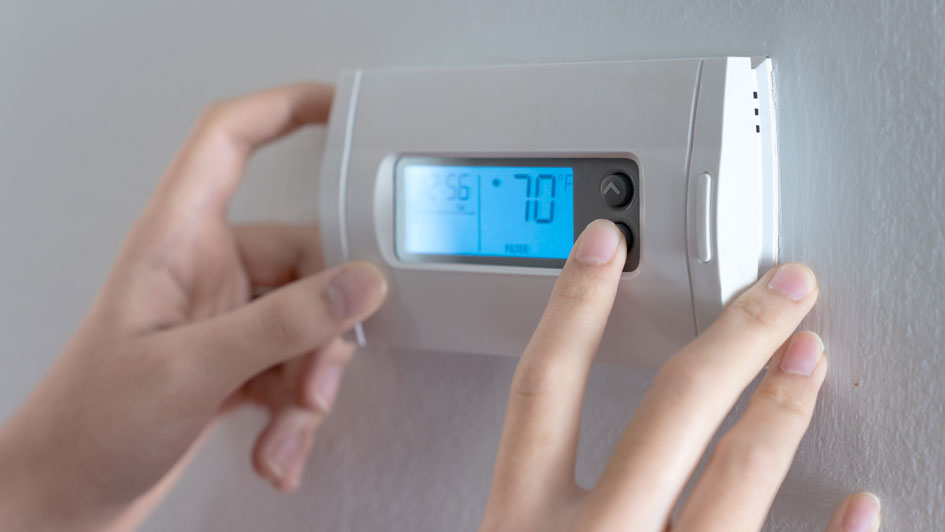
Everyone’s always looking to save money on their utility bills, but it turns out there’s a way to lower energy use, even when you're not even home.
The key is your thermostat. By using automatic schedules, you can tailor the temperature to your needs. You can create a number of automated temperature settings for when you’re home, away or even when you’re asleep.
With a few simple adjustments, you have more time to enjoy pleasant temperatures while keeping more money in your pocket. Take a look at a few ways your thermostat doesn't have to use up all your summer spending money:
While at Home
When you’re home, you want to enjoy a comfortable temperature. That’s why it’s best to set your thermostat lower in the summer if you're indoors to make the most of the cool air.
But the ideal temperature for the summer is usually between 78 and 80 degrees Fahrenheit. This way, you'll keep cool while keeping your energy bill more manageable.
While Away
If you're setting the temperature for a vacation or other trip away from the house, the majority of homeowners will set the thermostat higher than normal.
If your home is located somewhere a little cooler, you can set the thermostat to temperatures as high as 88 degrees while no one is home and then lower it back to the sweet spot of 78-80 degrees once you're home again. This way, your air conditioning system isn't working around the clock to cool an empty house.
While Asleep
When it comes to sleeping in the summer, you want a nice cool temperature. A great place to start is between 68-72 degrees Fahrenheit. This will keep you from getting too hot or too cold at some point overnight.
Other Strategies for Lowering Energy Use:
- Smart thermostat installation: Switching to a smart thermostat in the summer helps save money on energy costs as it forms temperature schedules according to your lifestyle and idea of what comfortable is. They can lower the temperature while you are home or sleeping, before allowing it to warm up when no one is around. Using reputed brands and models such as the Lennox iComfort, you have the ability to remotely access and change the temperature through your smartphone, tablet or laptop. Planning smart thermostat installation in your Hodgenville home can be the simplest strategy for maintaining comfortable, yet energy-efficient temperatures whether you're at home or across the country.
- Upgrade your HVAC system: A high-efficiency HVAC system can save money in the long run. With greater energy efficiency, your utility bills will be lower because it requires less energy to reach your preferred temperatures. Air conditioning installation in Hodgenville is a breeze for experienced professionals like Phelps Heating & Cooling, Inc..
- Stay on top of routine AC maintenance: Whether or not you keep up with regular air conditioning maintenance in Hodgenville can have a significant impact on your utility bills. With regular cleaning of the coils, checking for damage and clearing ventilation of dust and debris, you may notice your HVAC system run more efficiently. More efficient operation reduces strain on key parts and lowers operational costs, lowering total energy use and eventually the total monthly bill.
- Replace your air filter regularly: Cleaning or replacing the air filter regularly saves money by helping air flow efficiently through your air conditioner. When filters are clogged with dirt and debris, an AC unit has to work harder, and the added strain may impact the system’s life span and lead to breakdowns.
- Verify your attic has enough insulation: Insulation is a vital part of maintaining an energy-efficient home, securing the hot air outside and the cool air inside over the summer. The North American Insulation Manufacturers Association (NAIMA) recommends that homes in the southern United States should possess at least 13-14 inches of insulation, while those in northern U.S. states should have 16-18 inches.
- Check your ductwork: Damage to the ventilation is capable of increasing your energy bills much more than 20 percent, plus it can potentially allow harmful emissions from your water heater, clothes dryer and other appliances to get into the atmosphere of your home. Checking your ductwork for leaks and sealing them can address both concerns.
- Seal all other leaky spots in your home: Sealing leaky spots in your home with caulk, foam sealant or weather-stripping keeps temperatures a little cooler on hot summer days. Don't forget to check for any gaps around windows, doors and even outdoor fixtures. Devoting time and effort to sealing leaks now can help you save a lot in the long term.



